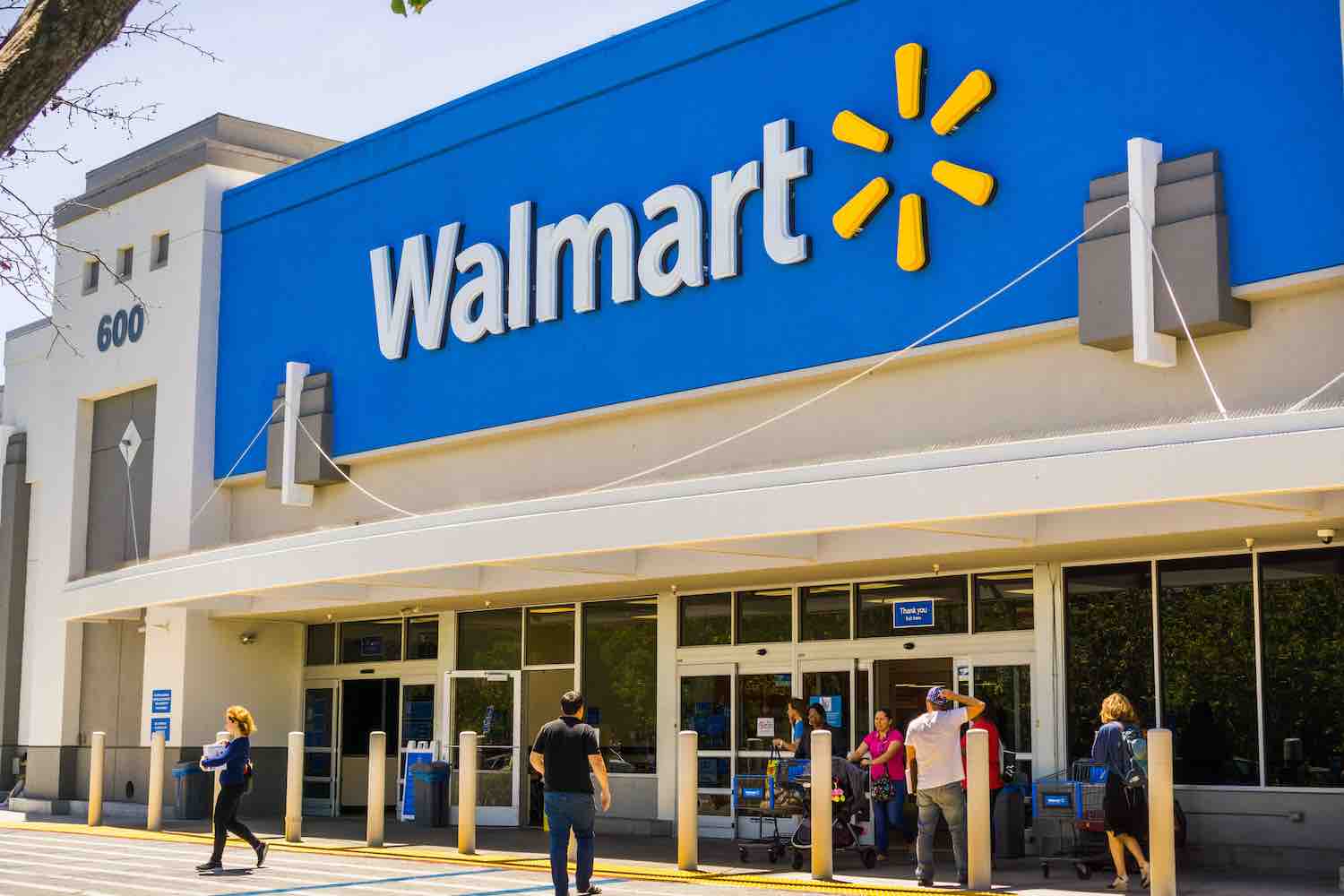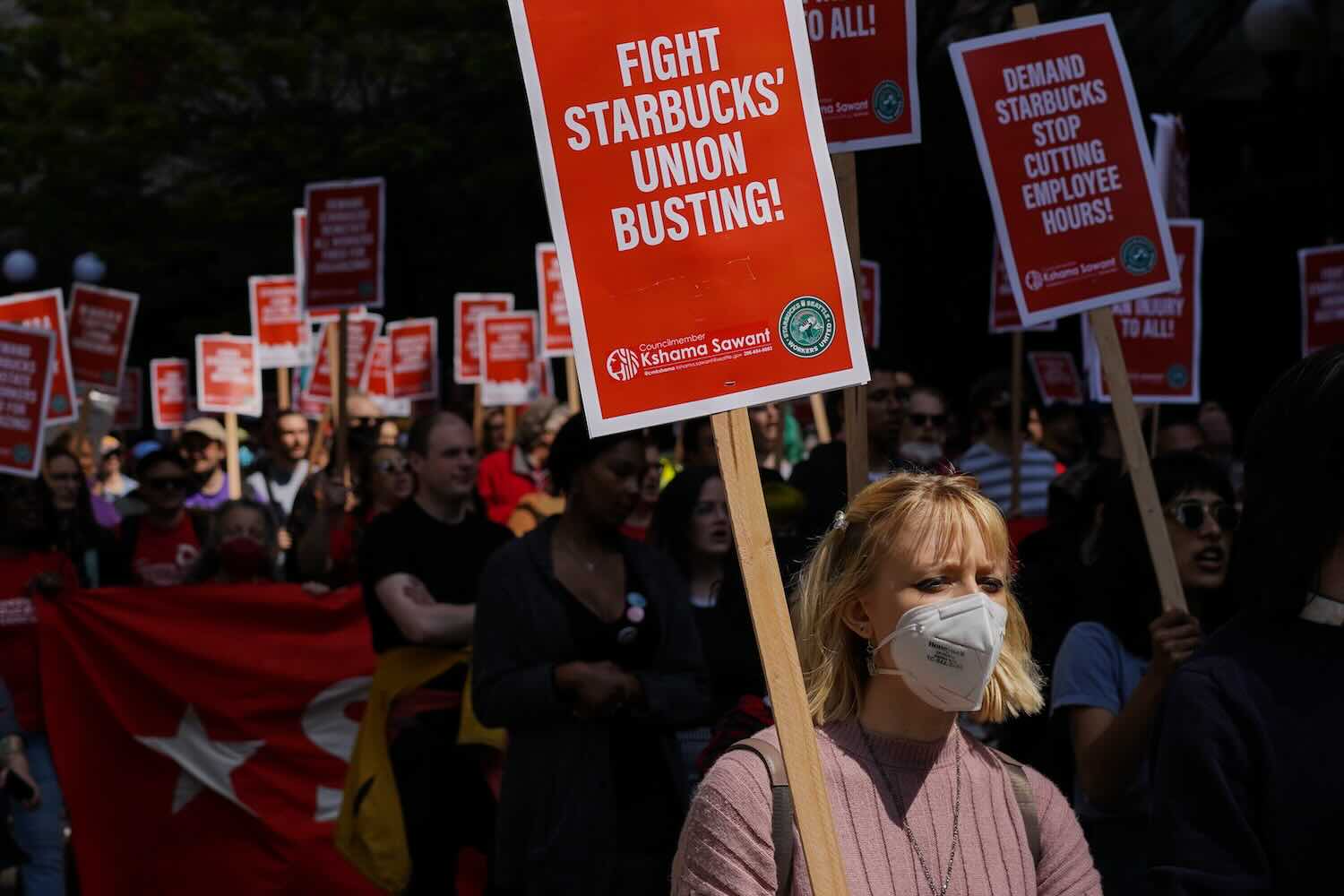Back in 2003, journalist Rick Wartzman was overseeing the business section of the Los Angeles Times. His team produced a Pulitzer Prize-winning series of stories detailing how Walmart became the largest company in the world — and how its rise relied on low wages for its workers and those of its suppliers.
Those stories helped to solidify a widespread perception of Walmart as an exploitative force in the global economy.
In 2015, Walmart — the largest private employer in the United States — announced a series of labor policies that raised worker pay. More recently, it has converted many of its part-time workers to full-time employees.
Wartzman, who had moved on to become executive director of the Drucker Institute at Claremont Graduate University (where he now heads the KH Moon Center for a Functioning Society), decided to commit himself to studying how and why Walmart transformed its relationship with its lowest-paid workers. He was granted an unusual amount of access by the company to its top executives, board members and employees.
His new book, Still Broke: Walmart’s Remarkable Transformation and the Limits of Socially Conscious Capitalism, chronicles the external pressures and internal self-examination that compelled the company to raise pay and provide greater opportunities for its front-line workers. He concludes that good intentions, even when followed by substantial actions, are not enough to ensure that hourly workers earn a living wage.
In an interview with Capital & Main, Wartzman (who serves on Capital & Main’s board of directors) discusses what he learned about Walmart as a global standard-bearer, and why he believes that government action is needed to create a fairly compensated workforce at the retail giant and beyond. (This interview was edited for length and clarity.)
Q: How did your perspective shift on Walmart over the years?
Wartzman: In my last book, The End of Loyalty, which came out in 2017, I was very critical of Walmart’s labor practices. That book covered a period from the end of World War II up to the Great Recession, so it predated all the changes I write about in Still Broke. I portrayed Walmart in The End of Loyalty as a model of 21st century capitalism, one that focused on a race to the bottom and driving labor costs as low as possible in order to fatten the bottom line and keep the stock price high and keep shareholders happy.
Then you flash forward, and I was giving some book talks about The End of Loyalty for the Federal Reserve and at the Aspen Institute, and there were some Walmart executives in the audience. Part of my speech was about the need for more employer-provided skills training for front-line workers in particular. That skills training provided by companies had really eroded over the past 40, 50 years, along with pay and benefits and job security. It was another aspect of the social contract between employer and employee that had unraveled.
At the same time, in my day job at the Drucker Institute, I had, along with some colleagues, started to develop a lifelong learning system, which would make it easier for people to be able to discover and access the courses and classes that they needed to learn new skills.
Walmart ended up becoming an early funder of that project, along with Google and some others. But Walmart was a huge, significant funder. I was shocked, having been this harsh critic for so long, that my institute got this funding.
I got a window into the company in a way I hadn’t had purely as a journalist. And I started to meet people who frankly surprised me. They self-identified, a number of them, as progressive. They said they had specifically come into Walmart to help make change, particularly around the way the company treated its front-line workers. They had, in fact, raised wages in 2015. And many of the folks I was meeting had helped drive that process. And it occurred to me that maybe I should take a fresh look at things.
Q: Did you think that relationship created a conflict for you as a journalist?
Wartzman: No, I really didn’t. This book is not a screed against Walmart, and it’s also not a hagiography that holds them up as the great corporate savior. I think it recognizes the good they’ve done and ultimately concludes it’s not enough, and that’s where I land.
They hate the title of the book, Still Broke. And it refers to their workers obviously still not having a living wage even after all the positive change they’ve made. It refers to, in many ways, Walmart, therefore, still being broken, and really our larger system in this country and society being broken. The title works on all three of those levels.
In terms of any conflict from my institute having received Walmart funding, I wrestle with this in the book, but what I say is that I’m always, as a journalist, going to call it as I see it.
Q: In 2015, after Walmart raised its pay for its workers, its stock price took a beating. Does that keep other companies from making a move like Walmart did in 2015, or even today have a deterrent effect on Walmart doing more of that?
Wartzman: Walmart saw $20 billion of market cap go “poof” in one day. The stock lost 10% of its value. Just took an enormous hit. There have been others over the years, from American Airlines to Chipotle – same thing. They’ve raised pay and the stock’s taken a 5% hit or whatever. And so this is all too typical and underscores the pressure that companies are under from Wall Street.
Now, when Walmart presented to the financial community what its higher wages would mean for the bottom line, it actually also gave something to Wall Street. It announced that same day that it was going to repurchase up to $20 billion of its stock. Companies buy back their own shares for all kinds of reasons, but it’s generally viewed as a giveaway to stockholders. It generally is designed to pump up the stock price. And Walmart announced this big stock buyback the same day. It obviously wasn’t enough. Wall Street was focused on the investment in workers, and there were some other investments Walmart was making in technology, and the stock price got clobbered when it became clear that profits would be squeezed, at least in the short term.
Q: Walmart has in fact spent more on stock buybacks than pay raises, correct?
Wartzman: Yes. In fact, let me give you one more set of numbers, which I think may be the most telling in the book. From 2015, when Walmart implemented that first wage increase, up until the end of last year, the company invested $5 billion to $6 billion in higher pay and better benefits. They have, to their credit, more full-time workers now and fewer part-timers. They’ve invested a lot in worker training. All of these positives add up to $5 billion to $6 billion. That’s real money. That’s nothing to sneeze at. Again, a remarkable transformation.
But over that same period, from 2015 to the end of last year, Walmart bought back $43 billion worth of their stock. As journalists, we’re taught to follow the money. Companies like Walmart talk a lot about embracing stakeholder capitalism and taking care of providing value for all of their stakeholders, including their workers. And to some degree, that’s obviously true; they’ve invested $5 billion to $6 billion. But that doesn’t necessarily mean shareholder primacy — putting shareholders first — is dead. You can just follow the money and see.
Q: And were those pay raises since 2015 game changers for workers and industry?
Wartzman: Context is really important here. The initial pay raise that Walmart made was to its starting pay. And at the time, back in 2015, the starting pay at Walmart averaged $7.65 an hour. That was a tick over the federal minimum wage, which then, and unfortunately still, was stuck at $7.25 an hour. Walmart then boosted that to $9 an hour and then $10 an hour in a two-step, two-year process. Today, the company’s starting pay is $12 an hour. And so directionally, that’s all really good.
In recent years, Walmart has raised pay for others in different roles, and so the company’s average wage is now a little bit over $17 an hour. Again, in the context of Walmart being Walmart and its long history of tamping down wages, that’s real progress. That is a remarkable transformation, in my view.
But where does that leave workers? Even with all the progress, the average Walmart worker still makes less than $29,000 a year. That is not a living wage anywhere, really, in America.
That is a huge problem. And it is typical of so many industries that we know of, not just retail, but fast food and caregiving and agriculture and warehousing and gig work — industry after industry. These are folks who serve us and really take care of us and then are often left at the end of the month turning to Medicaid or food stamps to make ends meet. These are people who face painful tradeoffs between food and medicine and paying their rent. These are awful choices in the richest country on Earth.
Q: You reached the conclusion that in the United States, we need a government-mandated federal minimum wage of $20 an hour. What, in doing this work on Walmart, got you to that conclusion?
Wartzman: In the eyes of many, Walmart has really embraced stakeholder capitalism and is taking positive steps.
But again, at the end of the day, its average worker is making less than $29,000 a year. It still has far too many workers — I think one is too many — on Medicaid and food stamps. It has workers struggling to make ends meet, folks who wake up every day and work hard. And so what this showed me is we can only solve this as a collective. Corporate America will never go far enough or fast enough on its own. This needs to be a public solution. We need a government-mandated living wage of $20 an hour.
Q: Another dimension you look at in your book is Walmart’s long history of antagonism to labor unions. Has their corporate perspective on unions evolved at all?
Wartzman: No, this is one place that Walmart has not evolved at all. What has changed is that it is no longer an active issue. For all intents and purposes, the United Food and Commercial Workers has given up trying to organize Walmart. It’s just proved too big a mountain to climb. It’s too vast.
But Walmart’s posture has not changed. It views any union as an interloper. Executives say, “We don’t need any third party organization coming between us and our beloved associates.” It’s the same rhetoric that every union-busting company uses. You can hear the same sort of language from Amazon and Starbucks today. It’s the same playbook, and it’s one that Walmart, in many ways, wrote.
Q: And is the diminished presence of unions another reason why you think the government mandated minimum wage has to be the solution?
Wartzman: I really do. Walmart is the biggest employer in America, so in some ways they set the standard. But they’re also just a symptom of company after company in industry after industry that has this army of low paid workers.
Look, I’m not naive. With government so polarized, it is hard to get things done. We can’t even get to a $15 an hour minimum wage, or even $10.
I’m sure people will say, “$20 an hour — that is so radical.” But again, what I think is radical is living in the richest country on Earth and having tens of millions of people struggle in the way I’ve described.
Peter Hong is editor-in-chief of the journalism nonprofit Capital & Main, which produced this piece. It is co-published here with permission. Copyright 2022 Capital & Main











